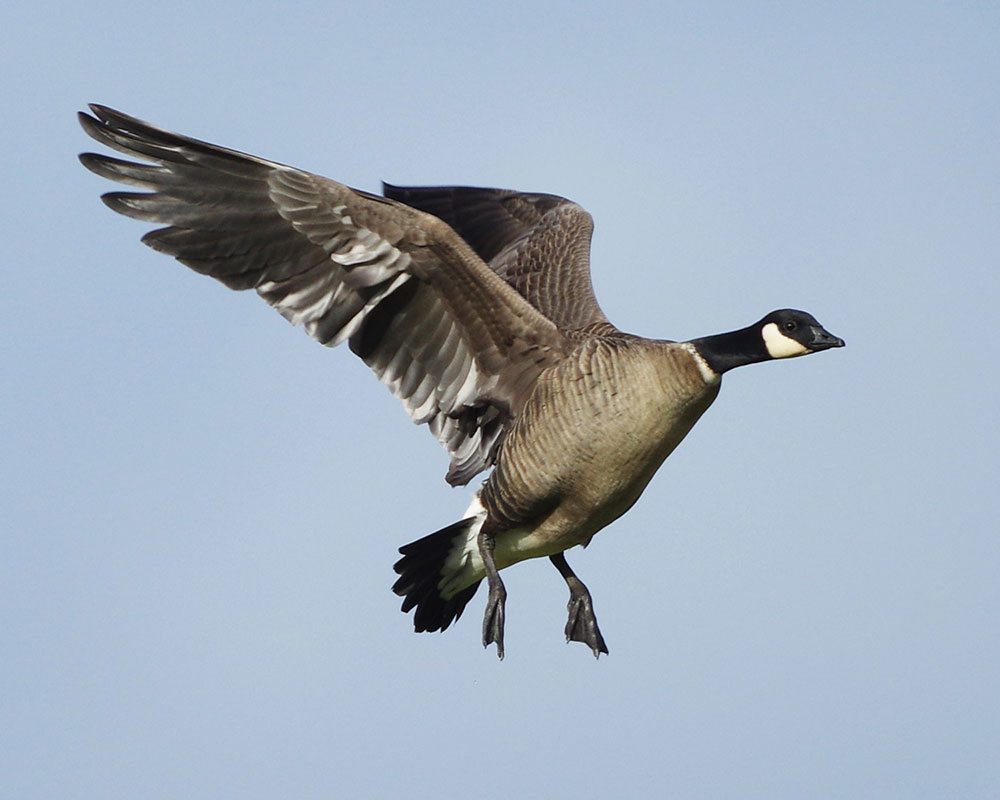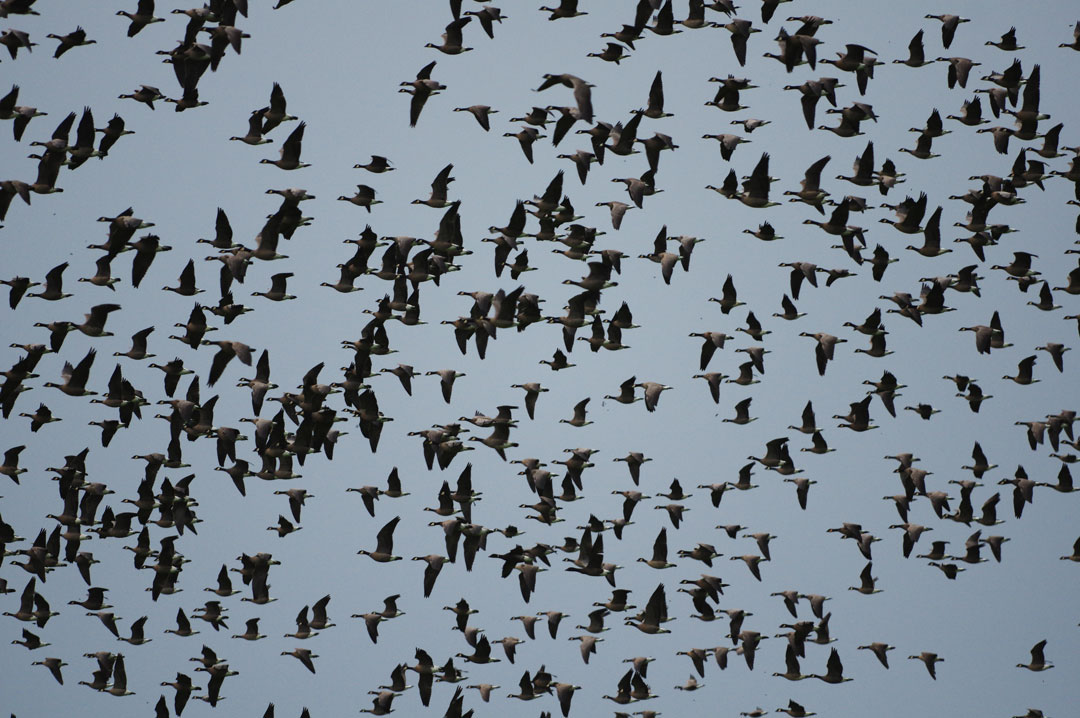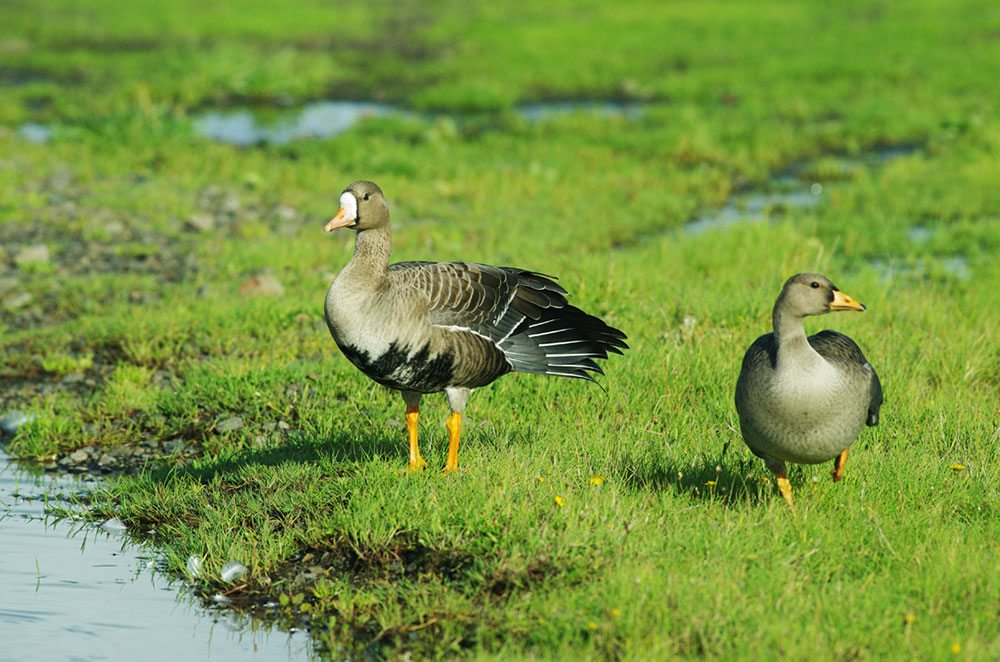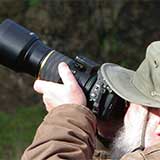Tillamook Coast Life Blog
A Wild Goose Chase – and a very special flock of geese
I have been travelling around Tillamook County surveying flocks of wintering geese to see what kinds are present this year.
The dairy pastures in the county are favored wintering areas for Canadian Geese and Cackling Geese, and also get a scattering of other species each winter.
One day, two Snow Geese were just east of Tillamook off Highway 6 in a flock of Cackling Geese, and the day before two Greater White-fronted Geese were with Canada Geese at the south end of the Nestucca National Wildlife Refuge (NWR). Most recently, the two White-fronts were still on the Nestucca NWR, and another 12 were in a pasture at Otis, just south of the Tillamook County line.
Canadian Geese and Cackling Geese
The Canadian Geese and Cackling Geese have considerable diversity themselves. Until 2000, they were considered a single species, but DNA analyses led to recognition of them as two species with at least nine subspecies. Individual populations migrate and winter as groups, and U.S. Fish and Wildlife Service and the Oregon Dept. of Fish and Wildlife managed these populations separately, to avoid overhunting.
The relevance of this for Tillamook is that several of these migrate through or winter in the county, and the dairy pastures have been important in their conservation. Wintering Canadian and Cackling geese like to eat grass, and prefer to feed where the grass is fairly short. Hayfields and dairy pastures work well. Tillamook County pastures are important for at least three populations that have been conservation concerns in recent decades.
Dusky Canada Geese
Dusky Canadian Geese are a distinctive subspecies that winters in Oregon and breeds in south-central Alaska, mainly on the Copper River delta. They are large, with the darkest bodies of all the Canada Goose subspecies. Their nesting habitat was severely disturbed by the 1964 Great Alaska Earthquake, and the population has been vulnerable ever since.
A majority of their Oregon population winters in the Willamette Valley, but the main secondary area is the Nestucca NWR around Pacific City. These geese are easy to see along Highway 101 south of Pacific City and from the viewing area on Christensen Road at the south end of the refuge.
Aleutian Cackling Geese

Two populations of Aleutian Cackling Geese also use the Nestucca NWR. These distinctive little geese are recognized by white collars at the bases of their black necks.
By the 1960s, the combined world population was reduced to a few hundred birds, with their precise nesting areas unknown. Arctic Foxes had been introduced to most of the Aleutian Cackling Geese nesting islands to promote fur trapping, and had nearly exterminated them. In the early 1960s, a remnant population was found on Buldir, a small steep island in the western Aleutians that did not have foxes.
In the meantime, around 1976, another small population was found nesting on one island in the Semidi group, off the Alaska Peninsula far to the east. Some of these were banded and were discovered wintering at Pacific City. This population has been monitored since, and has been fairly stable, at a few hundred birds. They feed mainly on the Martella Dairy on the east side of Pacific City, and fly out to Haystack Rock to roost each night. I guess their island heritage has taught them that sea islands provide safety from nocturnal predators.

Wintering on the Oregon Coast
Beginning in the 1970s, the Fish and Wildlife Service removed the foxes from several larger islands in the western Aleutians and the Buldir. Since then, the bird’s population has spread to larger islands and grown to over 180,000.
They mostly winter in the Central Valley of California, but as their population has grown they have established wintering and staging areas several places in northern California and along the Oregon Coast. They are a common sight along the Oregon coast in both fall and spring as they migrate over the near-shore ocean and above the coastline throughout October and November, and again in April and May.
In late November, over 2,000 of these birds were at the Martella Dairy along with the flock from the Semidis. I pulled to the side of Resort Road to take some photos, but as I did the geese farthest from me took off, and in a wave all the geese flew up and over me. I scanned above them and found the cause: an adult Bald Eagle soaring over, looking for weaker or slower individuals. After a few minutes, the eagle flew off to the south, and the geese settled down again, right in front of me.
On a more recent visit, I found only a few hundred of the Aleutians – probably the Semidi breeders – as the remainder evidently continued on south.

I did find two Greater White-fronts again, and a couple of oddballs. One is a Western Canada Goose (the largest, palest subspecies in the area) with a white blaze down its throat, and white wedges spiking up its flanks. The other was a Lesser Canada Goose with a frosty speckled white cap. Neither is of particular biological or conservation significance, but it is neat to see what you can find when you take time to look at each bird carefully, and to see them as individuals.

